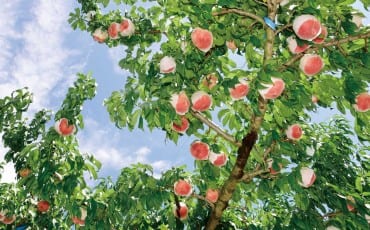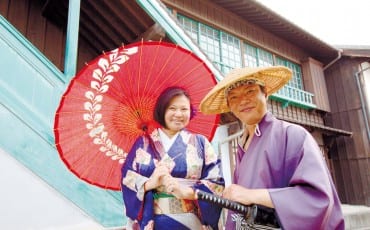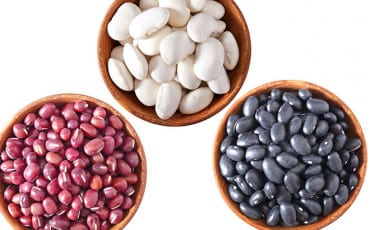Articles
Seasons
Oct 1, 2015
Autumn in Japan
With its abundance of good food and quality sake, autumn is undoubtedly one of the best times to visit Japan.
As the temperature drops during autumn in Japan, there are plenty of reasons for gourmands to rejoice. Not only will the tastiest fish make their return to the colder waters up north, autumn is also the season for shin-mai (new harvest rice).
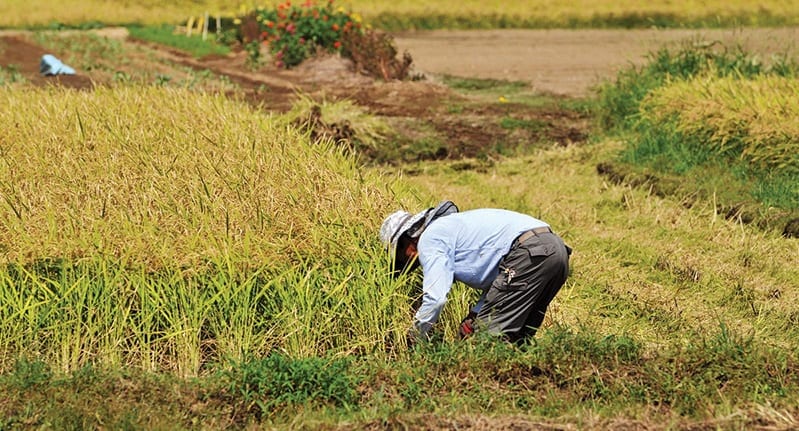
Festivals are held in honour of this new rice harvesting season, and the earliest harvests are usually first offered to the gods as a tribute. At the rice festival held in November in Yamaguchi prefecture’s Hoseiji Temple, for instance, participants cut handfuls of the ripened grain as an offering to the gods.
The Japanese national sport of sumo wrestling also has its origins as an offering to inspire an abundant harvest. Think the tradition of stomping each foot on the ground when wrestlers enter the ring as a gesture to intimidate their opponents? Not so. It’s actually a gesture to “connect” the wrestler elementally to the earth. Passed down from a Shinto ritual, the stomping of feet by the sumo wrestler is believed to ward off pests and fires, and to urge the rice gods to continue to keep watch over the harvest.
Sake Time
Of course, with the harvest of new rice comes … sake! But the sake you’ll be drinking isn’t actually made in the same year. It was most likely brewed the winter before, and then allowed to age.
Autumn is, however, the best time to try limited edition, seasonal brews, particularly a variety known as “hiyaoroshi”. This type of sake is only pasteurised once (whereas most sakes are pasteurised twice to halt the enzymatic action of bacteria and yeast). Hiyaoroshi is usually characterised by a gentle and mellow aroma, along with a smooth and creamy texture.
Fruit Fest
Autumn is also the best time for you to get your hands on rare Kyoho grapes. Celebrated for their large sizes and deep purple colouring, Kyoho grapes can grow to the size of a small plum, and are primarily grown in the Yamanashi and Nagano prefectures. Head to these areas in autumn, and you might even get a chance to pick them yourself on a grape farm. Considered a luxury fruit, Kyoho grapes are carefully graded for colour, size and imperfections. Although the skin and seeds are perfectly edible, they are usually removed prior to being eaten, as they tend to be bitter in flavour.
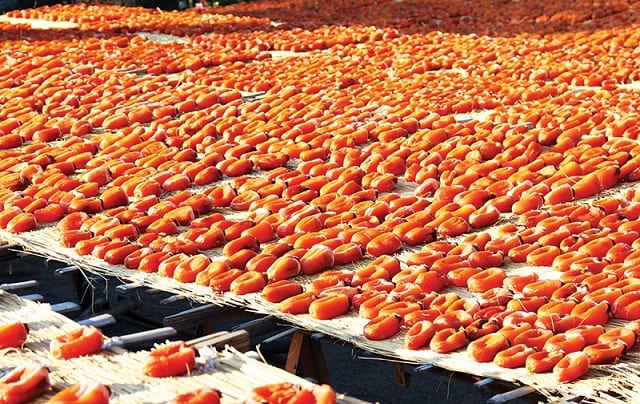

The persimmon, also known as kaki in Japanese, is another fruit harvested in autumn. There are a few varieties of persimmons, but they are broadly categorised into sweet or bitter. While the sweet varieties are usually eaten as they are, the bitter ones are usually dried in the sun or near a fire to eliminate the bitterness and intensify their sweetness. Dried persimmons are known as “hoshigaki”.
Hoshigaki can be eaten on its own, or accompanied by a cup of freshly brewed green tea. However, it is also used in the making of “wagashi”, or traditional Japanese sweets.
With its gorgeous scenery and endless delicacies, you’ll definitely want to make a date with Japan in autumn. We promise, you won’t regret it. Itadakimasu!
TEXT: DENISE LI





